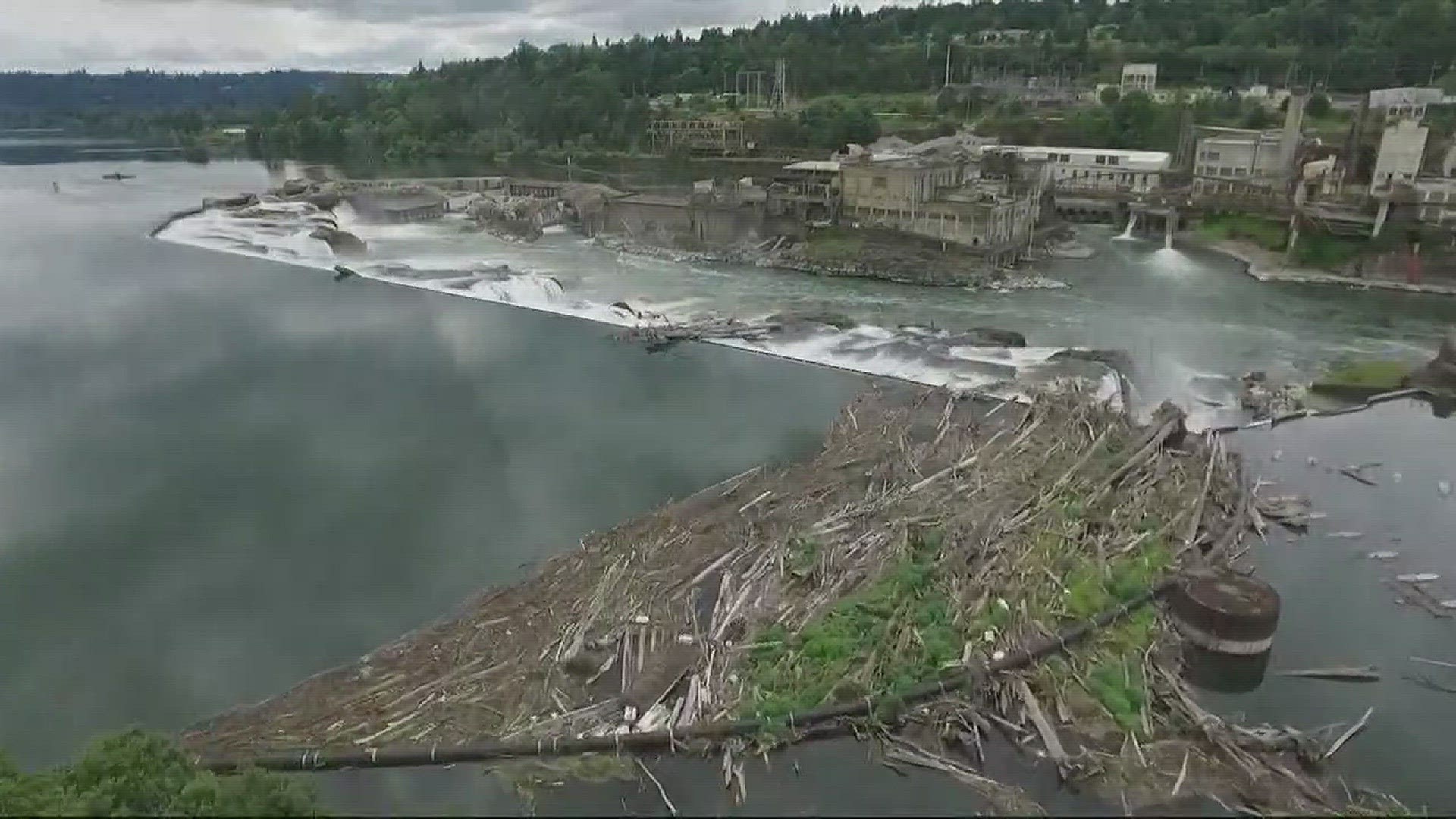PORTLAND, Ore. -- State wildlife officials are seeking permits that would allow them to remove and take lethal action against California sea lions at Willamette Falls.
The animals have become a threat to the survival of endangered fish that pass the falls en route to the Upper Willamette watershed, officials said.
This year, sea lions ate an estimated 20 to 25 percent of the wild winter steelhead waiting to enter the fish ladder, said Bruce McIntosh, deputy fish chief of inland fisheries for the Oregon Department of Fish and Wildlife.
“That’s off the charts,” McIntosh said. “It’s been an issue for at least five years, but we’ve reached the point recently where it’s become a crisis."
The number of sea lions at the falls has jumped from just a few animals to more than 40 during the past year, in an area where they can easily target fish returning from the ocean.
“(Willamette Falls) is a predator trap, they’ve got them right where they want them and can just kind of hone in,” McIntosh said. “Under the current rules, we can do a variety of hazing methods, but it hasn’t had much of an impact.”
While sea lions are most commonly associated with the ocean, they range far from salt water in search of fish and have historically trolled Willamette Falls and far up the Columbia.
It wouldn't be the first time state officials sought lethal action against sea lions for eating fish. Five years ago, Oregon and Washington received federal authorization to kill sea lions for eating salmon at Bonneville Dam on the Columbia River. Officials trapped and euthanized 54 sea lions in 2016.
Under current rules, ODFW must document the impact for three years before applying for the special permit.
The National Oceanic and Atmospheric Administration's Fisheries Service will make the final decision. The NOAA is asking for public input in the form of a task force that will include scientists, tribes and members of conservation groups. The task force will give NOAA a recommendation. Nominate someone for the task force.
“It will be a big decision for them,” McIntosh said. “None of us want to pit one animal against another, but when you see this type of impact, there’s no choice but to look for all the tools available.”
The Humane Society of the United States opposes culling sea lions and filed a lawsuit to prevent action at Bonnville Dam that ultimately failed.
"What troubles us the most about killing sea lions is that they're using it as a distraction from the real problems facing the fish," said Sharon Young, marine issues field director for Humane Society. "They're not adequately addressing the real problems, which is dams, habitat loss, over-fishing and ocean conditions.
"They're basically trying to put a Band-Aid on a hemorrhage. It might be satisfying, but it's not going to change anything for the fish."
McIntosh said it was a matter of sea lions getting habituated to an easy meal at the falls. The number of sea lions there has steadily increased, despite hazing efforts that included “sea-lion bombs,” rubber bullets and chasing them off. This year, officials used a trap to catch sea lions and relocate them.
He also noted that the sea lions captured will be made available to marine parks and zoos before lethal action is taken.
“They’re smart animals,” he said. “But if we got to the point where there was 100 of them there … it would be hard to imagine. Almost like getting overrun by the huns.”
Zach Urness has been an outdoors writer, photographer and videographer in Oregon for nine years. He is the author of the book “Hiking Southern Oregon” and can be reached at zurness@StatesmanJournal.com or (503) 399-6801. Find him on Twitter at @ZachsORoutdoors.


